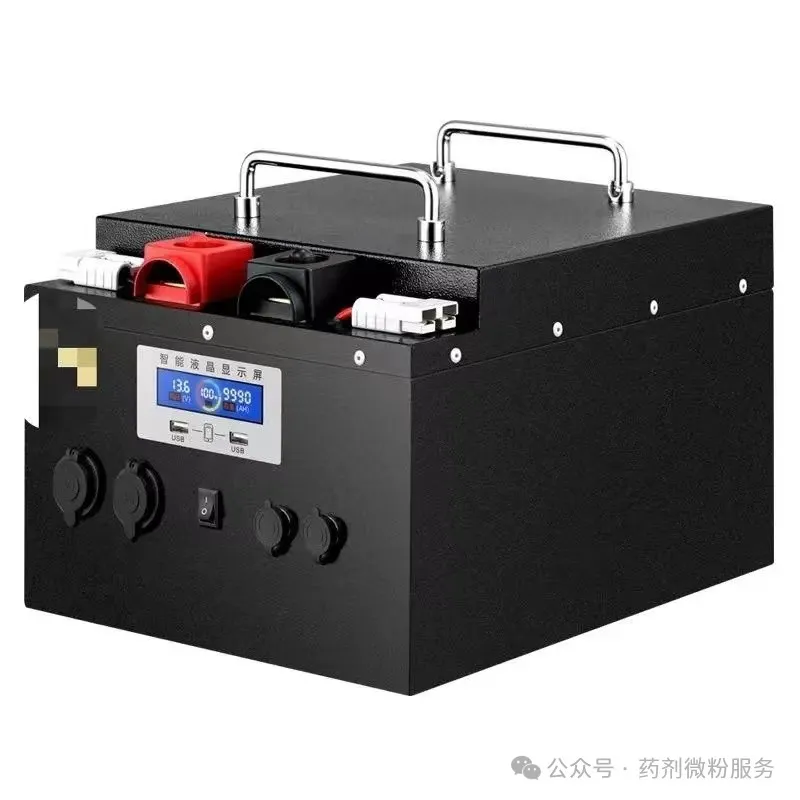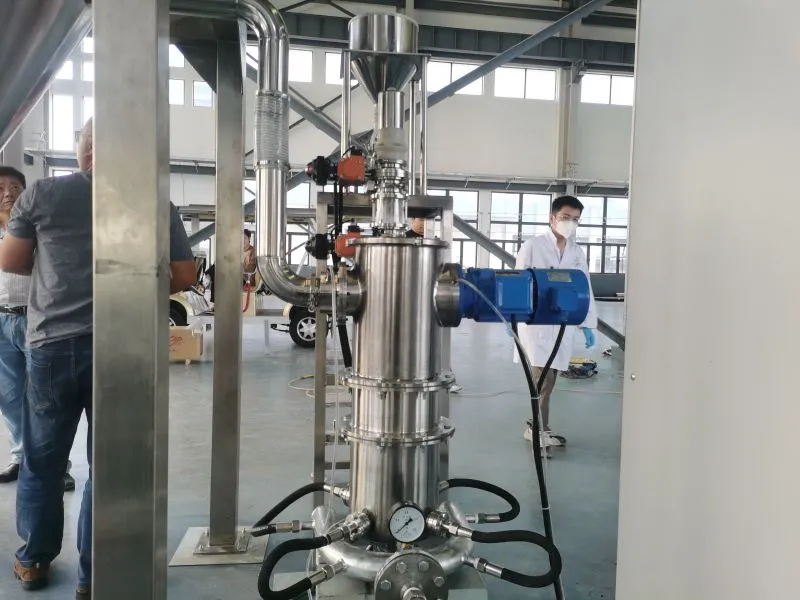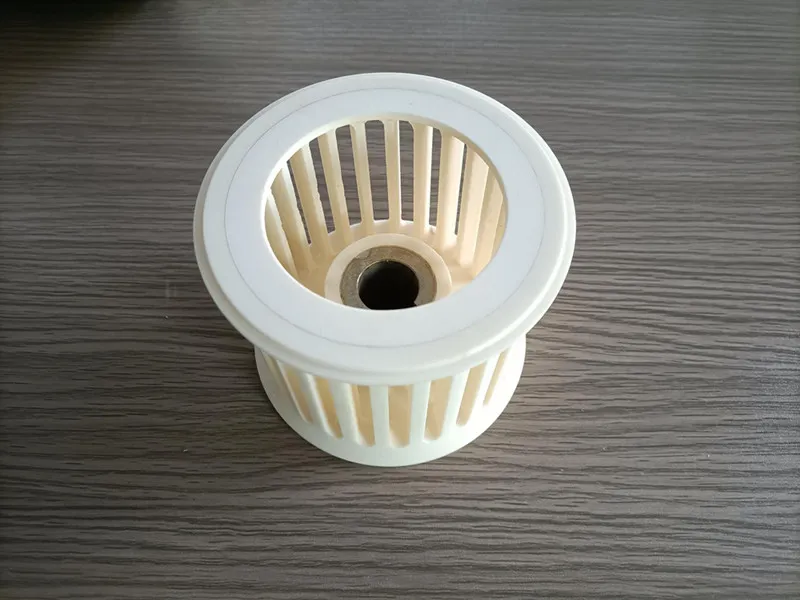Lithium battery material needs Lithium iron phosphate special airflow crusher. It is an essential tool for battery material processing. It refines the battery raw materials. It breaks the large particles into very fine ones and increases their surface area. , greatly improving the utilization rate of raw materials.
Lithium iron phosphate battery
The Lithium Iron Phosphate (LFP) battery is a new type of lithium-ion battery. It is widely used in electric vehicles. It is also used in starting batteries, energy storage, and mobile devices. A lithium iron phosphate battery has a positive and negative electrode. It also has an electrolyte and separator. The positive electrode uses LiFePO4. The negative electrode uses graphite. The electrolyte uses lithium salt solution. The separator isolates the positive and negative electrodes to prevent short circuits. The rated voltage of the cell is 3.2V, and the charging cut-off voltage is 3.6V~3.65V.

Working principle of lithium iron phosphate battery
Lithium iron phosphate batteries work by moving lithium ions. They move back and forth between positive and negative electrodes. This movement powers the discharge and charging process. During discharge, we remove lithium ions from lithium iron phosphate. This happens in the positive electrode. They move through the electrolyte to the carbon in the negative electrode. At the same time, they release electrons for use in circuits. During charging, the power source applies current to the battery. This causes lithium ions to move from the negative to the positive electrode. They re-embed in lithium iron phosphate. At the same time, electrons also enter the negative electrode. They do this through an external circuit. This reciprocating cycle realizes the discharge and charging functions of the battery.
Synthesis of lithium iron phosphate
We have basically perfected the process for making lithium iron phosphate. It has two main forms: solid phase and liquid phase. Among these, the high-temperature solid-phase reaction method is the most commonly used. Also, lithium iron phosphate is made in three ways: bionic, cooling drying, and emulsification drying. They also include pulse laser deposition. We can make products with small particles and good dispersion. We can do this by using different methods. This can cut the diffusion of lithium ions. The path grows. It is where the two phases touch. It speeds up the diffusion of lithium ions.
Advantages and Disadvantages of Lithium Iron Phosphate Batteries
Advantages: 1. LFP has a good cycle life. It can keep stable performance during many charge and discharge cycles. It has a long service life. 2. It is safer than other cathode materials. Lithium iron phosphate has higher heat stability and a low risk of burning. So, it is seen as a relatively safe cathode material. 3. Lithium iron phosphate has a low self-discharge rate. That is, the battery loses less energy over time if left unused. 4. Lithium iron phosphate batteries are greener than other types. They lack heavy metals and are non-toxic and non-polluting.
Disadvantages: 1. The low-temperature performance of the battery is poor. 2. The energy density is relatively low. Compared to ternary batteries, the energy density of lithium iron phosphate batteries is lower.
Application of jet mill in micronization of lithium iron phosphate
The size of the particles will affect the performance of lithium iron phosphate. We can use a jet mill. This will reduce the particle size of the powder and improve its reactivity. Its working principle is this: powder is crushed onto the surface. This occurs as a result of compressed air or nitrogen being used. The tangential direction enters the cylindrical crusher cavity. After entering the cavity, the injectors around it accelerate the particles. They move along the spiral. Slow particles and fast particles move along the spiral. When they collide, they produce micronization and crushing.

Why is it necessary to use a closed-loop inert gas protection system to crush lithium iron phosphate cathode materials in a jet mill?
Lithium iron phosphate batteries must strictly control moisture content
1. Lithium reacts with water to form lithium hydroxide. Hydroxide is corrosive. High moisture will irreversibly reduce the battery’s first charge and discharge efficiency.
2. The electrolyte and moisture in the battery react to make harmful gases. This causes poor performance of the battery pack.
3. Harmful gases will raise the battery’s internal pressure. They will also thicken the battery. If the internal pressure is too high, there is a risk of explosion.
The jetflow mill is used under strict conditions. It needs low powder moisture. It is used for grinding lithium iron phosphate, iron phosphate, etc.

11 Advantages of Closed Loop Airflow Mill
Isolate oxygen. The oxygen level can be kept below 10 ppm. Control material purity without pollution. The whole system uses PLC logic control. It has low equipment costs and simple operation.
1. Like regular airflow mills, it can process materials with Mohs hardness from 1 to 10. It can also mix and grind many materials.
2. The process is closed. Inert gas protects against oxygen. Choose the gas purity based on product needs. The process is a closed gas cycle with low losses and costs.
3. Control the oxygen content in the system as needed, up to 10PPM or less. Make gases like nitrogen automatically replenish. This keeps the pressure balanced. It also keeps the oxygen at safe levels.
4. The whole system has explosion-proof holes on the pipelines. They cut losses in blasts and explosions. These are caused by high pressure and concentration in the system.
5. It operates at a negative pressure. It has pulse automatic dust cleaning. It uses high-precision imported filter material. It has high dust collection efficiency.
6. Inert gas is recycled with low loss and low cost.
7. High degree of automation. The whole system uses a PLC touch screen control system and an oxygen analyzer. This system can be started and stop with one button. It can also add nitrogen and balance pressure automatically. It is simple to use.
8. Full ceramic protection, effective control of material purity, and no pollution.
9. It has a sealed structure. It has an optimized inert gas supply system. It also has a structure for filling and controlling oxygen.
10. A perfect instrument system selection and design.
11. Use different grinding methods for different materials.
